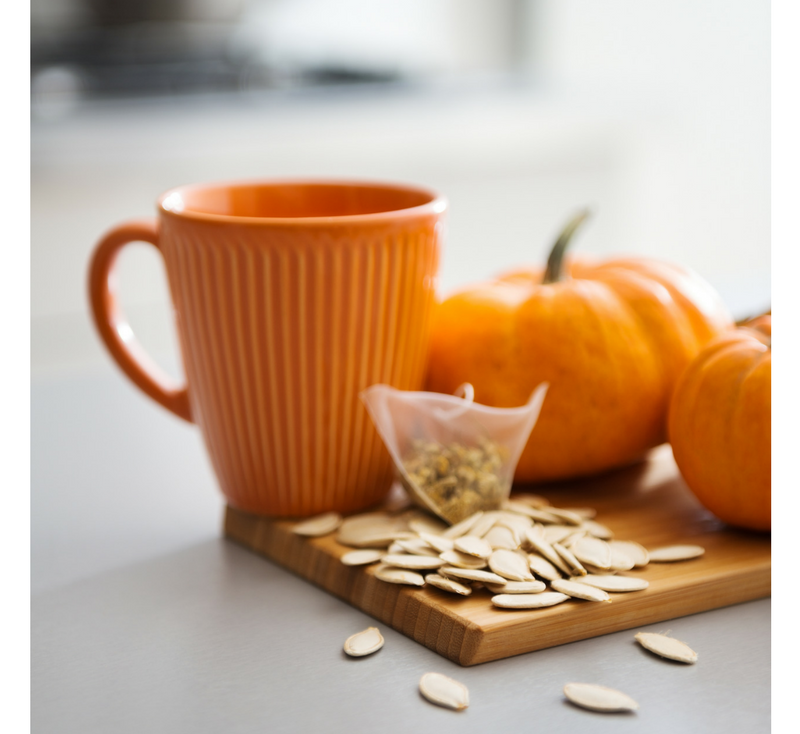
Some people cannot wait until the calendar turns from August to September, just so they can enjoy a variety of seasonal pumpkin food and drink offerings for the rest of the year! Some folks don’t enjoy pumpkin-spice everything, but I, for one, am totally team pumpkin. I love the nostalgia related to the taste and smell of pumpkin. Even though the season is winding down, I still try to use pumpkin year round. Pumpkin is low in calories, but rich in fiber, vitamin A and other essential vitamins – making it a great addition to a healthy diet.
While the opportunity to try new pumpkin recipes is abundant this time of year, the down side is that many of these foods can be high in sugar, calories, and fat. But fear not pumpkin lovers – we can still evolve our recipes to enjoy healthier versions of the season’s favorites (And really, any time of year is the right time to take control of your diet and adapt recipes).
To celebrate the closing of pumpkin season, I have taken a popular pumpkin recipe to showcase how you can adapt recipes to fit into your healthy diet.
Pumpkin Zucchini Bread
I love fruit and vegetable breads. They can be versatile as a dessert or as a quick breakfast – and they are easy to alter into healthier versions. I decided to modify a recipe for pumpkin zucchini bread, which allows for bonus vegetables! The adapted recipe comes from Taste of Home’s Pumpkin Zucchini Bread.
My Adaptions to the Recipe:
- I decided to add whole wheat flour to the recipe to add in more fiber and grains to the bread. I used 1.5 cups all-purpose flour and then 1.5 cups of whole white wheat flour. (Note: You can completely substitute out the all-purpose flour for the wheat flour for a heartier, denser, and higher fiber bread.)
- I also substituted ½ cup canola oil (with added omega-3) and ½ cup unsweetened applesauce for the 1 cup of butter. I love using unsweetened applesauce in breads as a partial fat substitute because not only does it cut fat and calories, but it adds in moisture for good texture.
- The change that had the biggest impact was replacing the 1 cup of white sugar and 1 cup of brown sugar with 1 cup of stevia for baking. Stevia for baking is not a zero calorie replacement, but a reduced calorie blend of cane sugar and stevia. This product facilitates the browning, taste, and texture which come from sugar in baking while significantly reducing the calories.
The Final Product
The final product was delicious! My adaptions resulted in a tasty, moist bread that I ate for breakfast the whole week. Nutritionally, the changes I made reduced the calories from 176 per slice down to 123 calories per slice, cut fat from 9g to 6.7g, and reduced sugar from 13g down to 3.9g per slice. That is a 9g reduction in sugar in just one slice!
This is just one example of how simple changes can be made to turn a typically high-calorie, high-fat and high-sugar food into something more nutritious. What is one of your favorite recipe adaptations?
 Carolyn Reynaud, MS, RD, LD is a licensed registered dietitian and a paid contributor to SteviaBenefits.org. She received her BS in nutrition from Michigan State University and her Masters and Certificate in Public Health from Georgia State University. She has experience working in several avenues of health care including corporate wellness, clinical disease management, research, and health promotion. She has been working as a health coach specialist for close to 6 years, where she counsels patients on preventative healthcare and helps them meet their health goals. Follow her on Twitter @ReynaudCari.
Carolyn Reynaud, MS, RD, LD is a licensed registered dietitian and a paid contributor to SteviaBenefits.org. She received her BS in nutrition from Michigan State University and her Masters and Certificate in Public Health from Georgia State University. She has experience working in several avenues of health care including corporate wellness, clinical disease management, research, and health promotion. She has been working as a health coach specialist for close to 6 years, where she counsels patients on preventative healthcare and helps them meet their health goals. Follow her on Twitter @ReynaudCari.


